Despite its age the Sony a6000 remains one of Sony’s most popular mirrorless cameras and was also my very first Sony Alpha camera.

I’ve put together this top 10 list of the most popular lenses based on feedback from our own Alpha Shooters community.
Of course, there are a lot more than just 10 lenses that you can mount to the Sony a6000.
Please visit my Sony E-Mount Lenses Guide for a complete list of all E-mount lenses that can be used with the Sony a6000.
Sony A6000 Forum & Facebook Group
If you are looking for further help and advice on the A6000 or would simply like to share your photos and videos, then please head over to our friendly APS-C Forum. If you prefer Facebook then I also run the Sony Alpha Shooters Group where you can ask questions or post your shots taken with the Sony A6000.
Here are the top 10 lenses for the Sony a6000 listed by focal length:
1. Laowa 9mm f/2.8 Zero-D

The Laowa 9mm f/2.8 Zero-D is the widest wide-angle lens that you can currently buy for the Sony a6000. It is manual focus only, but if don’t mind this then this lens is definitely a great one to have in your gear bag.
Wide-open at f/2.8 central sharpness is excellent, and it becomes even better at f/4 and f/5.6. Edge sharpness isn’t quite so good wide-open, but it’s very good when you hit f/5.6 through to f/11. Diffraction will start to kick in if you stop down past f/11. CA (Chromatic Aberration) is very well controlled. Vignetting wide-open at f/2.8 is very noticeable, and it remains even if you step-down to f/11.
Despite the Zero-D in the name which stands for “Zero Distortion”, there is very minimal distortion but it’s really nothing to worry about and can easily be corrected in post. Flare control could be better and you will get some flare when pointing this lens towards strong light sources, even with the lens hood on.
The Laowa manages coma very well making the Laowa 9mm an option for astrophotographers, although the vignetting could be cause for concern.
The Laowa 9mm f/2.8 Zero-D is very well built and weighs in at only 215g, so you will barely notice this lens on your Sony a6000. If money were no object I’d order one today.
Pros: Very sharp, low CA, low distortion, compact
Cons: Manual focus only, flare control, vignetting, price
Recommended Reviews: Christopher Frost (YouTube) | Technology Mafia (YouTube) | ePhotoZine
Sample Photos: FlickR
Minimum Focusing Distance: 0.12m (0.39ft)
Minimum Aperture: f/22
Maximum Aperture: f/2.8
Aperture Blades: 7
Auto Focus: No, manual focus only
Stabilization: No.
Filter Thread Size: 49mm
Length: 53mm (2.1 in.)
Diameter: 60mm (2.36 in.)
Weight: 215g (7.58oz.)
Price Check & Buyer Reviews for Laowa 9mm f/2.8 Zero-D
At: Amazon | B&H Photo | Venus Lens
2. Sony E 10-18mm F4 OSS (SEL1018)
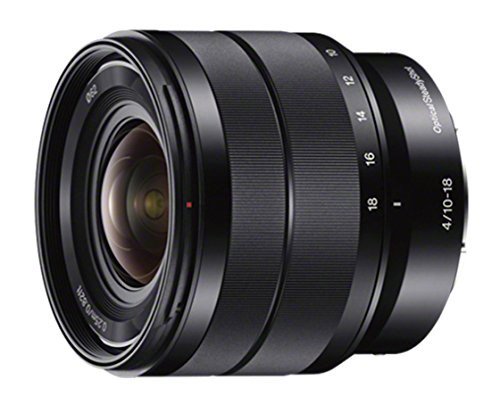
The Sony E 10-18mm F4 OSS is an APS-C lens and also the widest that Sony offers with a focal range of between 10-18mm. With a maximum constant aperture of f/4, autofocus and optical image stabilization all packed into a high quality metal housing, this is really a pretty nice lens and also one that I own myself.
At 10mm the lens is already sharp at f/4 in the center of the frame, but things do get a little softer towards the edge. However stop down to f/5.6 and the edges soon become nice and sharp and at f/8 the sharpness is extremely good across the frame. For 9/10 of my landscape shots I’m typically using this lens at f/8, so don’t worry about the softer corners when wide-open at f/4. At 14-18mm sharpness drops off a little at f/4, but stopping down to f/8 soon sharpens things up again.
Chromatic aberrations are reasonably well controlled but some purple fringing is visible in high contrast shots. However, with lens corrections turned on in the a6000 this will always be corrected with JPEG images and if you shoot raw then you can easily fix this in post.
Wide-angle lens always suffer from vignetting in the corners and the 10-18mm is no different. At 10mm and f/4 vignetting is apparent and it’s not even gone completely at f/11. Thankfully in-camera corrections also take care of this for JPEG images. There is only a small amount of distortion visible but again this will be corrected in-camera for JPEGS.
At only 225g this is a very light lens and is often my first choice when I’m travelling light or hiking in the mountains. Below is a shot of Mont Blanc that I took with the 10-18mm on my Sony a6500, I only admired this mountain from afar!
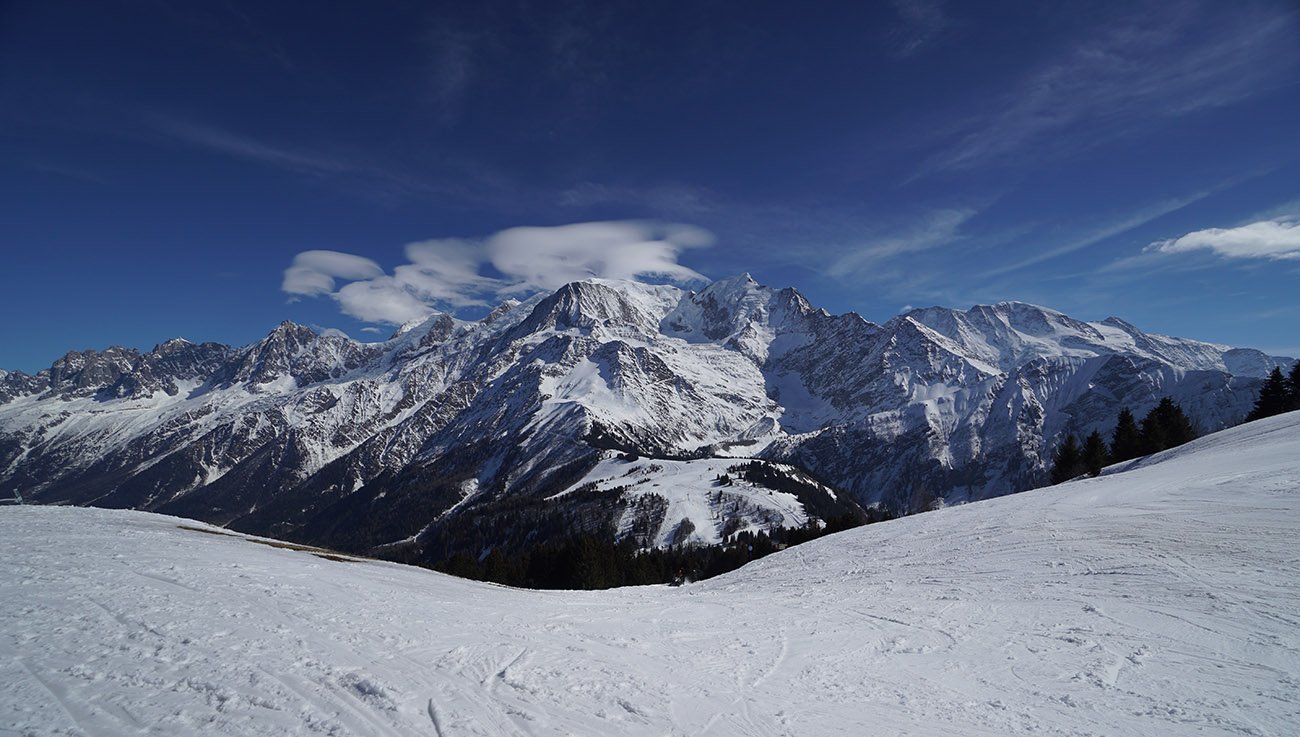
Sony E 10-18mm (Shot on a6500) @ 10mm | 1/400 | f/7.1 | ISO 100 | Handheld | ** Full Resolution SOOC Download: JPEG | RAW
Pros: Build quality, low weight, sharpness, distortion, quiet AF motor
Cons: Vignetting, expensive
Recommended Reviews: Drew Robinson | John Sison (YouTube) | Stuck in Customs | SonyAlphaLab
Sample Photos: Flickr
Minimum Focusing Distance: 0.25m (0.82ft)
Minimum Aperture: f/22
Maximum Aperture: f/4
Aperture Blades: 7
Auto Focus: Yes
Stabilization: Yes
Filter Thread Size: 62mm
Length: 63.5mm (2-1/2 in.)
Diameter: 70.0mm (2-7/8 in.)
Weight: 225g (8oz.)
3. Sigma 16mm f/1.4 DC DN
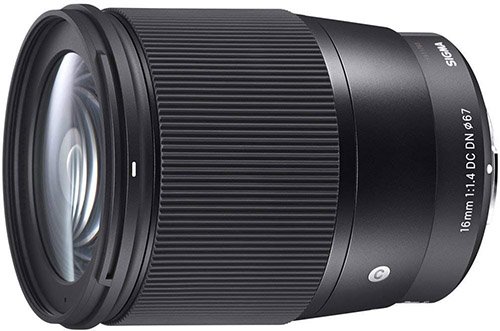
If you are looking for one of the sharpest wide-angle APS-C lenses with autofocus, then the Sigma 16mm f/1.4 DC DN is certainly a lens that you will want to take a closer look at.
With a maximum aperture of f/1.4 this is a very fast lens. Central sharpness is very good at f/1.4 and f/2, and it becomes even sharper at f/2.8 through to f/8. Diffraction does start to kick in from around f/11 but sharpness still remains good.
There are signs of CA (Chromatic Aberration) both centrally and at the edges of the frame, but this is very low and can easily be corrected in-camera if you are shooting JPEGS and in post if you are shooting raw. Barrel distortion is practically nonexistent and certainly nothing to worry about.
Flare resistance is extremely good and even when shooting directly into the sun it’s very difficult to induce any flare at all. The nine bladed aperture also produces very pleasing sunstars when you step the aperture down.
The focus ring is buttery smooth and the lens itself is well built and weather sealed, the only real downside to this lens is that the AF motor is not the quietest.
For astrophotography shooters this lens does unfortunately exhibit some coma. Stars are nice and round in the center of the frame, but closer to the edges they do start to stretch a little. But that that certainly doesn’t stop this being one of the best APS-C lenses for astrophotography, here’s a YouTube Review worth watching if you shoot astro, and also a Sigma 16mm F1.4 vs Rokinon 12mm F2.0 Comparison for astro.
Pros: Sharpness, price, low CA, build quality, flare resistance
Cons: AF motor noise
Recommended Reviews: Dustin Abbott | Technology Mafia (YouTube)
Sample Photos: Flickr
Minimum Focusing Distance: 0.25m (2.07ft)
Minimum Aperture: f/16
Maximum Aperture: f/1.4
Aperture Blades: 9
Auto Focus: Yes
Stabilization: No
Filter Thread Size: 67mm
Length: 92.3mm (3.6 in.)
Diameter: 72.2mm (2.8 in.)
Weight: 405g (14.3oz)
4. Sony E 16-55mm F2.8 G (SEL1655G)

The Sony E 16-55mm F2.8 G lens is a high quality standard zoom lens with a fast f/2.8 aperture.
Weather sealed and well built, this lens weighs in at only 494g (17.5 oz).
At the maximum aperture of f/2.8 and 16mm the center of the frame is very sharp and the corners look good too. Stop down to f/4 and f/5.6 and you’ll see further improvements in sharpness until you reach f/16.
At 55mm and f/2.8 the center of the frame is very sharp but the corners are a little softer until you step down to f/4.
There is some barrel distortion at 16mm when shooting at f/2.8 but this is gone by around 30mm. If you shoot in JPEG then in-camera corrections will take care of this for you anyway.
The lens does not include Optical Steadyshot which would have been useful when mounted to the Sony a6000 since this camera does not have in-body stabilization (IBIS). However, if you are shooting with a fast enough shutter speed this will not be an issue.
To learn more about this lens I’d recommend watching this video from Christopher Frost:
Pros: Well built, fast f/2.8 aperture, bokeh, razor sharp, flare control, quiet autofocus motor
Cons: No stabilization
Recommended Reviews: Christopher Frost (YouTube) | Arthur R (YouTube) | Jason Vong (YouTube)
Sample Photos: Sony Gallery | Flickr
Format: APS-C
Lens Construction: 12 groups, 17 elements
Angle of View: 83°-29°
Aperture Blades: 9 rounded
Minimum Aperture: f/22
Maximum Aperture: f/2.8
Minimum Focusing Distance: 1.09 ft (0.33 m)
Maximum Magnification Ratio: 0.66
Auto Focus: Yes
Stabilization: No
Filter Thread Size: 67mm
Length: 100mm
Diameter: 73mm
Weight: 494g / 17.5 oz
5. Tamron 17-70mm F2.8 Di III-A VC RXD
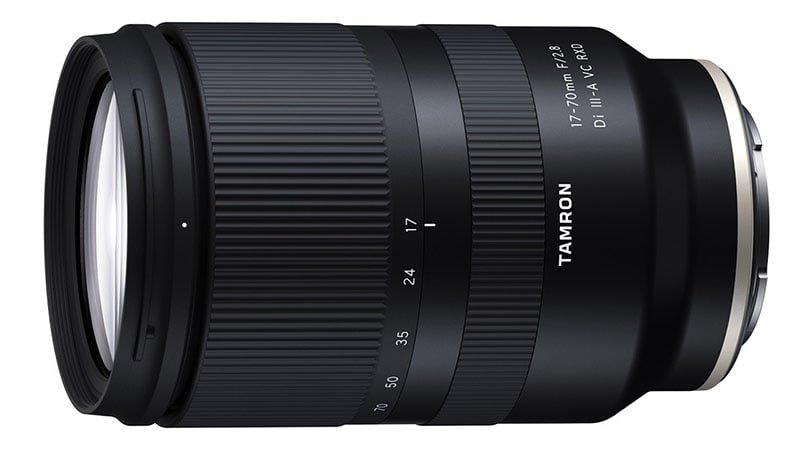
The Tamron 17-70 F2.8 Di III-A VC RXD lens has only recently been announced but it’s already proving to be a very popular choice for the Sony a6000 and Sony’s APS-C cameras.
For a quick overview of this lens I’d recommend watching the following video from Jussi Alexander:
Pros: Price, size and weight
Cons:
Recommended Reviews: Jussi Alexander (YouTube)
Sample Photos: Tamron Japan
Format: APS-C
Lens Construction:
Angle of View: 79゜55′-23゜00′
Aperture Blades: 9
Minimum Aperture: f/22
Maximum Aperture: f/2.8
Minimum Focusing Distance: 0.19m (7.5 in) (wide) / 0.39m (15.4 in) (tele)
Maximum Magnification Ratio: 1:4.8 (wide) / 1:5.2 (tele)
Auto Focus: Yes
Stabilization: No
Filter Thread Size: 67mm
Length: 119.3mm (4.7 in)
Diameter: 74.6mm
Weight: 525g (18.5oz)
6. Sony E PZ 18-105mm F4 G OSS (SELP18105G)
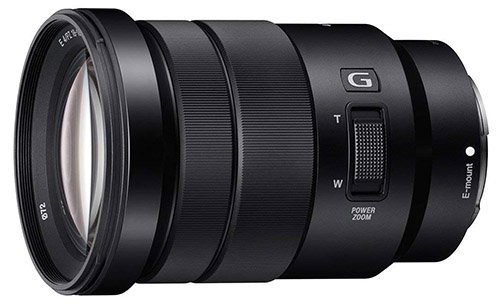
The Sony E PZ 18-105mm F4 G OSS lens is possibly one of the most popular short zoom APS-C lens that Sony makes, well at least it was until the 18-135mm was released. The 18-105 features a constant aperture of f/4 and a motorized internal zoom, so the lens body itself does not extend. Sony label this as a G lens, so both the build and optical quality are a step above their non G lenses. At 427g this lens is a good 100g heavier than the 18-135mm and it’s also longer and wider too.
The lens has optical image stabilization built in and the autofocus is both fast and accurate. The motorized zoom is controlled by a rocker switch on the lens, however I personally find that it’s too slow and would much rather have a non-motorized zoom.
At 18mm and the maximum aperture of f/4 central frame sharpness is excellent and the corners are just a little softer. Stopping down to f/5.6 improves the central sharpness even further and the corners are now also nice and sharp. At 45mm sharpness is even better and at 105mm sharpness is still excellent. Sadly, at 105mm edge sharpness does take a turn for the worse.
At the edges of the frame you will see some chromatic aberrations are prevalent towards the edges of the frame and there is also some vignetting at 18mm and f/4. Step-down to f/5.6 and the vignetting is gone. Distortion unfortunately it not so well controlled with both barrel and pincushion distortion visible. In-camera corrections will take care of this distortion when shooting in JPEG mode, but central sharpness can suffer as a result. Flare control is very good even when shooting directly into bright light sources.
I own this lens myself but since purchasing the 18-135mm lens it has just bene collecting dust. The 18-135mm is smaller, lighter, sharper in the center, and despite the variable aperture is definitely my preferred lens to take with me when I’m travelling light. However, video shooters might prefer the constant f/4 aperture and motorized zoom over the variable aperture and manual zoom of the 18-135mm, and the edge sharpness will probably be of less concern.
Here’s a sample shot taken on my Sony a6500 of the town Agulo, which you will find on the Canary Island of La Gomera.
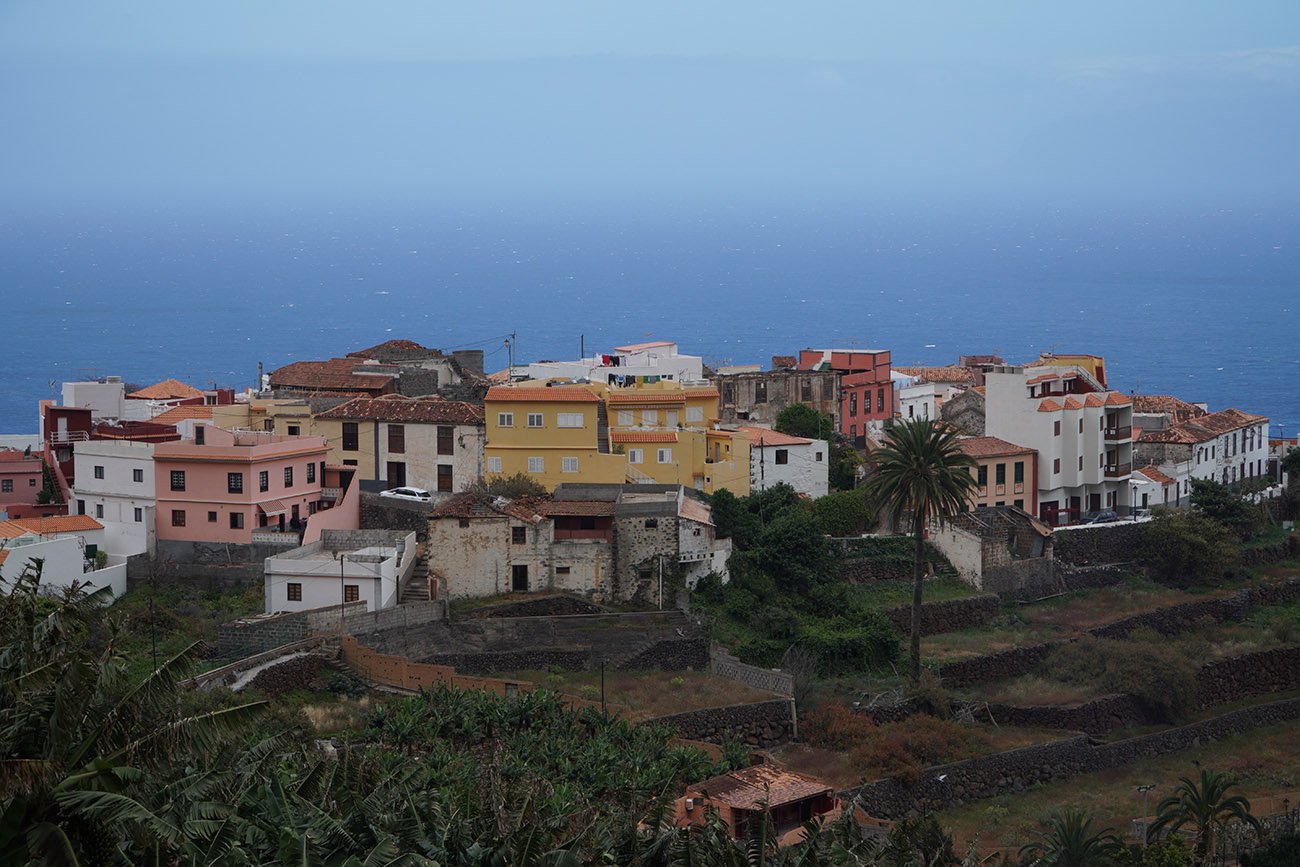
Sony E 18-105mm (Shot on a6500) @ 61mm | 1/200 | f/9 | ISO 100 | Handheld | ** Full Resolution SOOC Download: JPEG | RAW
Pros: Build quality, center sharpness, image stabilization, constant aperture
Cons: Edge sharpness at f/4 not great, CA, distortion at 105mm
Recommended Reviews: Jordan Steele | Christopher Frost (YouTube)
Sample Photos: Flickr
Minimum Focusing Distance: 0.45 (Wide)-0.95m (Tele) (1.48 (Wide)-3.12ft (Tele))
Minimum Aperture: f/22
Maximum Aperture: f/4
Aperture Blades: 7
Auto Focus: Yes
Stabilization: Yes
Filter Thread Size: 72mm
Length: 110mm (4-3/8in.)
Diameter: 78mm (3-1/8 in.)
Weight: 427g (15.1oz.)
7. Sony E 18-135mm F3.5-5.6 OSS (SEL18135)
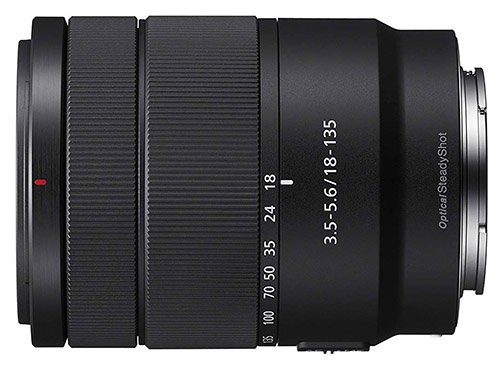
The Sony E 18-135mm F3.5-5.6 OSS is an APS-C lens that does everything really well. It’s small and lightweight and is definitely my own personal favourite travel lens for when I want to travel as light as possible. It covers a wide focal range from 18mm all the way up to 135mm and has a variable aperture of f/3.5 up to f/5.6.
Central sharpness at 18mm is very good but does improve from f/3.5 all the way up to f/11. At f/16 diffraction kicks in and things start to get just a little softer. At 35mm sharpness is excellent from f/3.5 up to f/11 then starts to drop at f/16. At 70mm and 135mm central sharpness is excellent from f/5.6 to f/11, but starts to drop at f/16. The edges are a little soft when using the longer focal lengths, but the center always remains sharp.
CA (Chromatic Aberration) centrally at 18mm is very well controlled, however the edges do show signs of fringing. This improves up to 70mm, but then at 135mm things become worse. Fortunately in-camera corrections take care of this, so if you are shooting in JPEG you don’t need to worry about it. Flare control is excellent and the bokeh is very smooth.
The Sony E 18-135mm F3.5-5.6 OSS lens also includes the inbuilt OSS (Optical Steady Shot) system which helps to stabilize camera shake on cameras that do not have IBIS built-in (like the Sony a6000). The autofocus motor is both fast and silent, and the lens feels well built. Sadly it is not weather sealed, so you need to be a little more careful with this lens when the heavens open.
I own this lens myself and have no regrets buying it. If you want an all-in-one travel lens that can do everything well and not weigh you down, then this is it. Here are just a couple of shots I’ve taken with it on my Sony a6500.
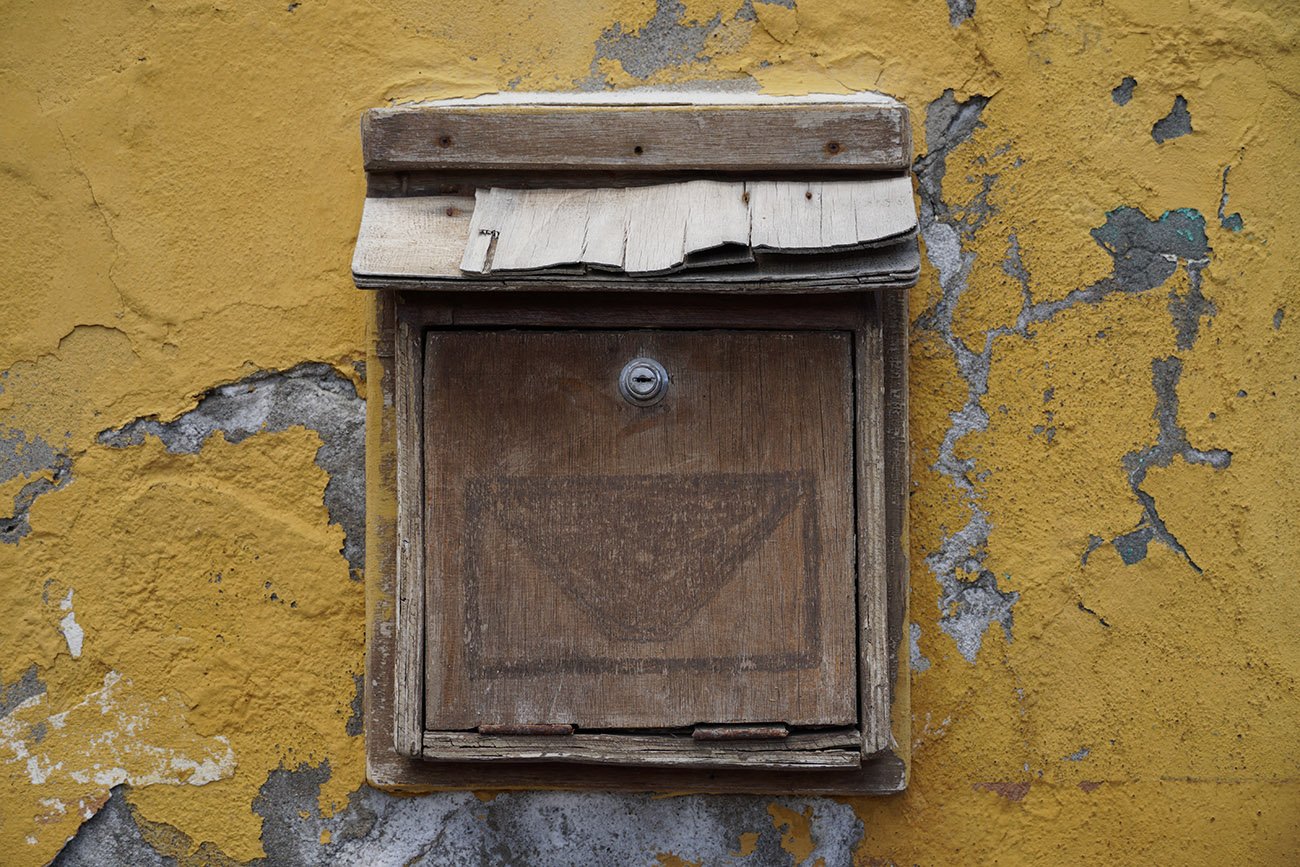
Sony E 18-135mm (Shot on a6500) @ 43mm | 1/500 | f/5 | ISO 100 | ** Full Resolution SOOC Download: JPEG | RAW
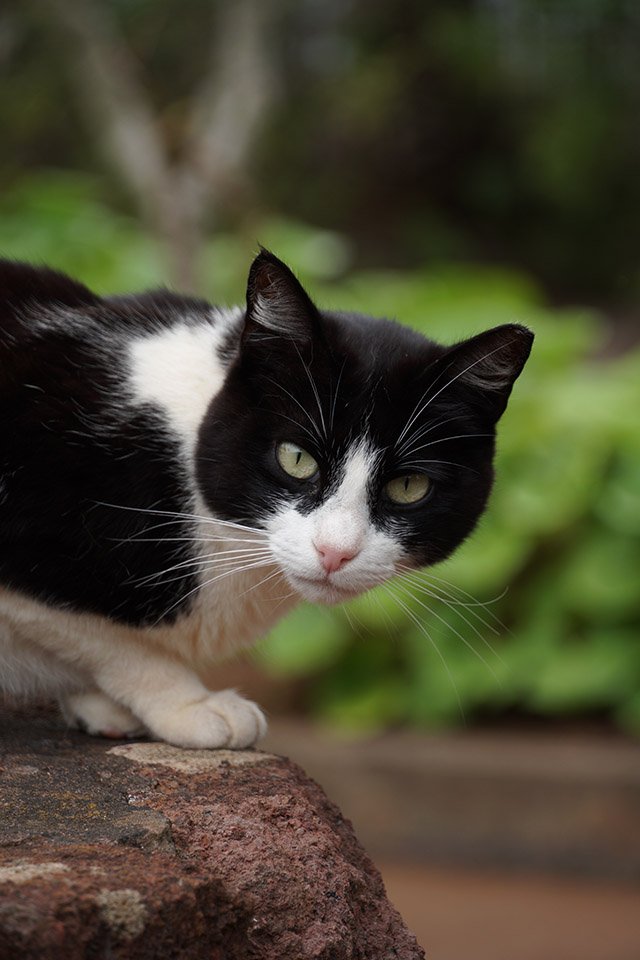
Sony E 18-135mm (Shot on a6500) @ 109mm | 1/125 | f/5.6 | ISO 100 | ** Full Resolution SOOC Download: JPEG | RAW
Pros: Lightweight, well built, bokeh, central sharpness, fast AF
Cons: No weather sealing, poor edge sharpness at 135mm
Recommended Reviews: Technology Mafia (YouTube) | SonyAlphaLab (YouTube) | Christopher Burress (YouTube)
Sample Photos: My Sample Photos | Flickr
Minimum Focusing Distance: 0.45 m (1.48 ft)
Minimum Aperture: f/22-36
Maximum Aperture: f/3.5-5.6
Aperture Blades: 7
Auto Focus: Yes
Stabilization: Yes
Filter Thread Size: 55mm
Length: 88mm (3-1/2 in.)
Diameter: 67.2mm (2-3/4 in.)
Weight: 325 g (11.5 oz.)
8. Sigma 30mm f/1.4 DC DN
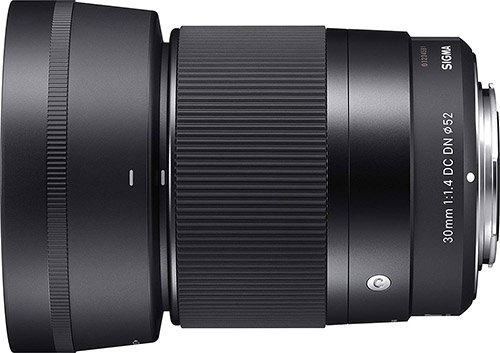
The Sigma 30mm F1.4 DC DN Contemporary lens is one of the sharpest lenses available for the Sony a6000 and Sony E-mount.
It’s sharper and offers better contrast than the more expensive Sony E 35 F1.8 lens above.
At the maximum aperture of f/1.4 this lens is razor sharp in the center of the frame and the corners are just a little softer. Stop down to f/2.8 and the corners soon sharpen up.
There is some vignetting when shooting wide-open but stop down to f/2.8 and you’ll now struggle to notice it.
Chromatic aberrations are visible at f/1.4 but improve as you stop down. These can be corrected in-camera if you are shooting JPEG.
I own this lens myself so here’s a shot of a little tawny owl at a local birds of prey center:

Sigma 30mm F1.4 DC DN (Shot on a6400) @ f/1.4 | 1/400 | ISO 160 | Full Resolution SOOC Download: JPEG | RAW **
To learn more about this lens I’d recommend watching this video from Christopher Frost:
Pros: Sharpness, size, price, bokeh
Cons: Vignetting, distortion
Recommended Reviews: Lavikka Photography (YouTube) | DPReview
Sample Photos: Flickr
Lens Construction: 9 elements in 7 groups
Minimum Focusing Distance: 30cm / 11.8in.
Minimum Aperture: f/16
Maximum Aperture: f/1.4
Aperture Blades: 9 rounded
Auto Focus: Yes
Stabilization: No
Filter Thread Size: 52mm
Length: 73.3㎜ / 2.9in
Diameter: 64.8㎜ / 2.55in.
Weight: 265g/ 9.3oz.
9. Sigma 56mm f/1.4 DC DN
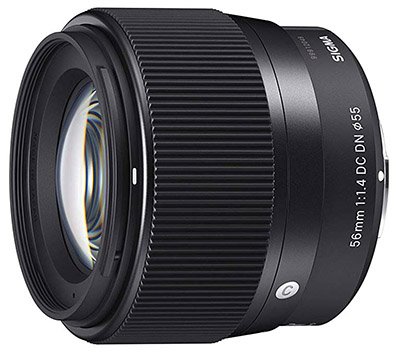
Just like both the Sigma 16mm and the 30mm, the Sigma 56mm f/1.4 DC DN Contemporary lens is well built and extremely sharp.
With an equivalent full-frame focal length of 84mm this is a very popular lens for portrait shooters.
Weighing in at 280g / 9.9oz this lens is only a little heavier than the 30mm lens but is actually the more compact lens despite the extra weight.
Central sharpness is excellent from f/1.4 right through to f/11, and it is still very good even at f/16. The extreme edges are very good from f/1.4 to f/2.8 and excellent from f/4 to f/11. Compared to the Sony E 50mm F1.8 the Sigma is significantly sharper.
Focusing is fast and quiet, flare is well controlled and the bokeh is deliciously smooth.
There is a little chromatic aberration present, mild vignetting and distortion, but in-camera corrections will take care of these for you when shooting JPEGs.
To learn more about this lens I’d recommend watching this video from Christopher Frost:
Pros: Very sharp, price, build quality, bokeh
Cons: Vignetting, CA
Recommended Reviews: Technology Mafia (YouTube) | Camera Labs
Sample Photos: Flickr
Lens Construction: 10 elements in 6 groups
Minimum Focusing Distance: 50cm / 19.7in.
Minimum Aperture: f/16
Maximum Aperture: f/1.4
Aperture Blades: 9 rounded
Auto Focus: Yes
Stabilization: No
Filter Thread Size: 55mm
Length: 59.5mm / 2.3in
Diameter: 66.5mm / 2.6in.
Weight: 280g / 9.9oz.
10. Sony E 70-350mm F4.5-6.3 G OSS (SEL70350G)

The Sony E 70-350mm F4.5-6.3 G OSS is currently the longest APS-C zoom lens that you can buy for the Sony a6000.
I’ve not owned this lens for very long but I have been impressed by its compact size, weight and autofocus performance. It is a variable aperture lens and the maximum aperture at 350mm is f/6.3.
I have to admit to being a little disappointed that Sony decided not to include a focus limiter switch that you do find on the Sony FE 70-300 full-frame lens, but it’s not a major issue unless you make use of this often.
I decided to compare the autofocus performance of this lens with the Sony FE 70-300 and found they both offer similar levels of performance.
Here are a dew sample photos that I’ve shot with this lens:
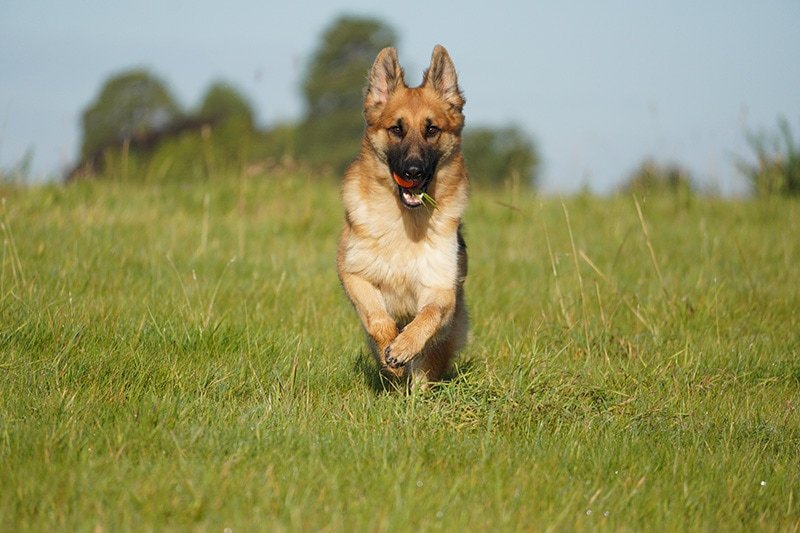
Sony a6400 + E 70-350 @ 350mm | 1/2000 | f/6.3 | ISO 500 | Full Resolution SOOC Download: JPEG | RAW **
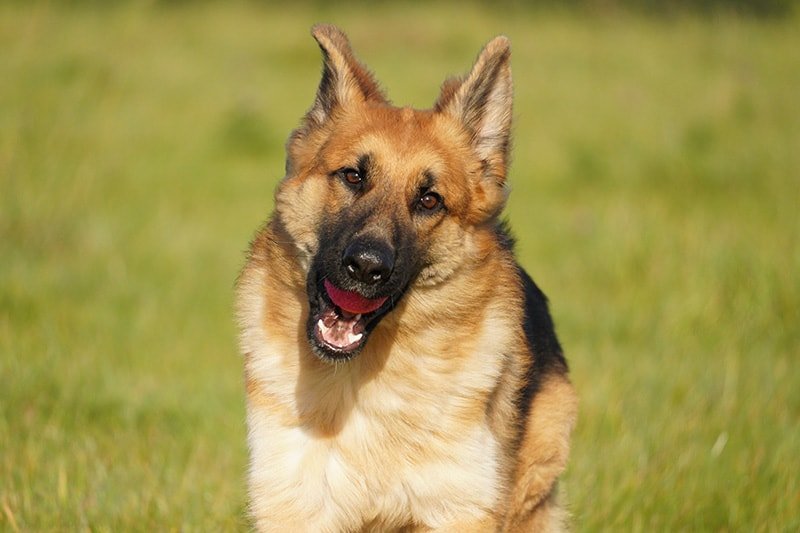
Sony a6400 + E 70-350 @ 350mm | 1/2000 | f/6.3 | ISO 640 | Full Resolution SOOC Download: JPEG | RAW **

Sony a6400 + E 70-350 @ 210mm | 1/2000 | f/6.3 | ISO 1000 | Cropped | Full Resolution SOOC Download: JPEG | RAW **
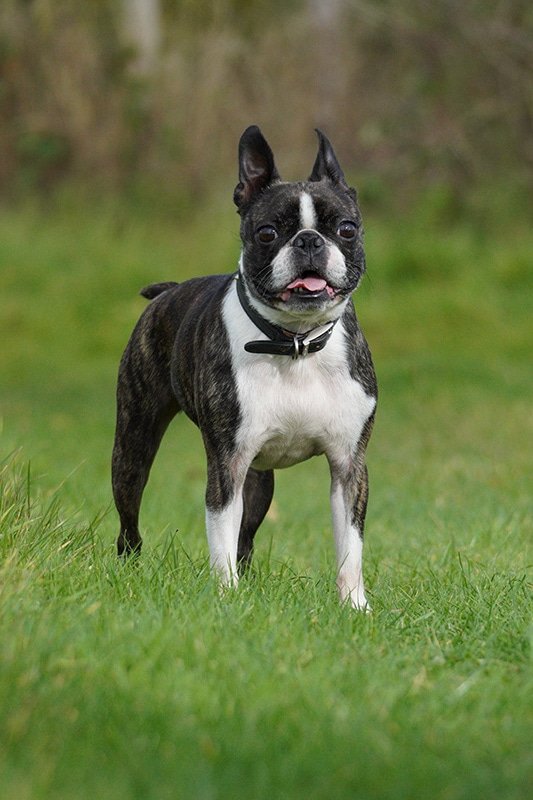
Sony a6400 + E 70-350 @ 160mm | 1/2000 | f/5.6 | ISO 1000 | Cropped | Full Resolution SOOC Download: JPEG | RAW **
And here’s one I shot with this lens on my a7R IV in crop mode:
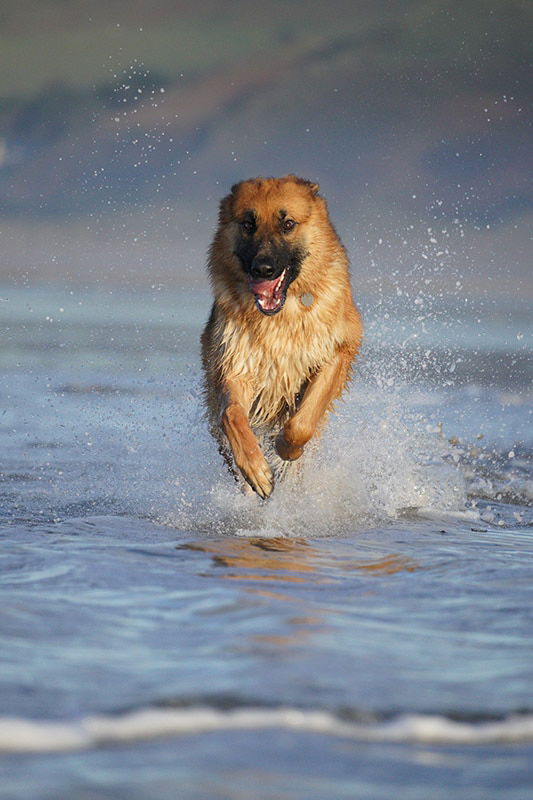
Sony a7R IV + E 70-350 G @ 350mm | 1/2000 | f/6.3 | ISO 1000 | Full Resolution SOOC Download: JPEG | RAW **
This lens has quickly become one of my favourite telephoto lenses for APS-C cameras like the Sony a6000.
To learn more about this lens I’d recommend watching this video from Christopher Frost:
Pros: Very fast and quiet autofocus, lightweight and compact, sharpness
Cons: No focus limiter or panning modes
Recommended Reviews: Christopher Frost (Youtube) | Arthur R (YouTube)
Sample Photos: Sony Gallery
Format: APS-C
Lens Construction: 13 groups, 19 elements
Angle of View: 22°-4°40′
Aperture Blades: 7 circular
Minimum Aperture: f/4.5-6.3
Maximum Aperture: f/22-32
Minimum Focusing Distance: 3.61–4.93 ft (1.1–1.5 m)
Maximum Magnification Ratio: 0.75
Auto Focus: Yes
Stabilization: Yes
Filter Thread Size: 67mm
Length: 142mm
Diameter: 77mm
Weight: 625g / 22.1 oz
**Please Note: Unless otherwise mentioned no post processing has been applied to the image samples in this guide except for cropping. Full resolution SOOC JPEG images are available to download. RAW files are also available but password protected to help keep my hosting costs sensible. However, I do provide the username/password to all members of our community forum. All images are copyright protected and may be used for personal use only.
Additional Lens Guides
If you’d like to discover more lenses that are compatible with the Sony a6000 I’d recommend taking a look at some of my additional lens guides.
Sony a6000 Resources
Sony A6000 Forum & Facebook Group
If you are looking for further help and advice on the A6000 or would simply like to share your photos and videos, then please head over to our friendly APS-C Forum. If you prefer Facebook then I also run the Sony Alpha Shooters Group where you can ask questions or post your shots taken with the Sony A6000.

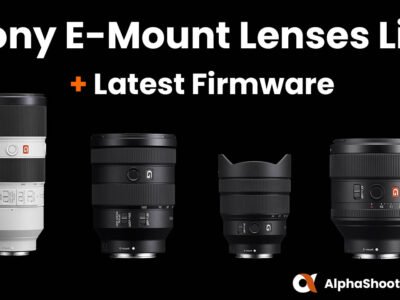
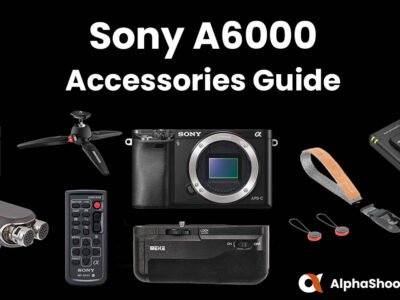
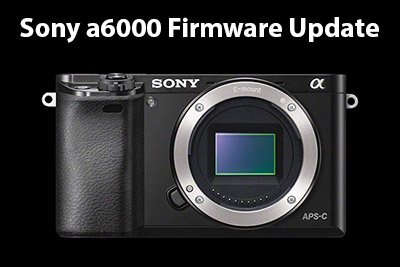
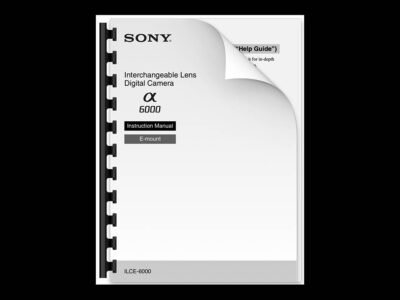
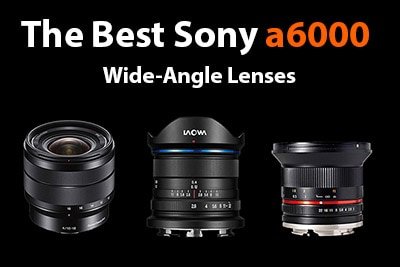

Hi Timothy,
Thanks for your thoughtful and detailed reviews. I own a Sony A6000 that I use maybe a couple of times a year for travel. Is there a particular model you would recommend for novice photographer-travelers looking to capture wildlife and scenery on safari or trekking in the jungle, but which isn’t too heavy or unwieldy, and at a more affordable price point? Would it be the Sony E 18-135mm F3.5-5.6 OSS or is there some other model you would recommend?
Thank you again for all of your help and these fantastic reviews!
Hi Eric. I’m sorry for the slow reply. The Sony E 18-135mm F3.5-5.6 OSS is a great lens providing you can get close enough to your subjects. If you are going to need a little more focal length then a lens like the Tamron 18-300mm f/3.5-6.3 Di III-A VC VXD covers a very useful focal range and isn’t too large or heavy. If I was just taking a single lens then I’d probably go with the Tamron.
I am so appreciative of your review of lens for the a6000 and your YouTube videos. I did read your review of the 200-600 lens above, but I know in a year things can change. Is the 200-600 lens the lens you would still suggest for wildlife photography? Or has something thing new been released this year that is compatible with the distance the 200-600 provides?
Hi Shannon. I’m very sorry for the slow reply. I would still strongly recommend the Sony FE 200-600 lens for wildlife photography providing it suits your budget. Alternatives you might want to consider would be the Sigma 150-600 or the Tamron 150-500. You’ll find a good comparison of all three lenses here: https://mirrorlesscomparison.com/e-mount-lenses/sony-vs-sigma-vs-tamron-telephoto-zoom/
Hello – so appreciative of tour reviews! They are really helping me narrow my choices. Wondering if you have any info on the 200-600? I have an a6000 and am torn between the 200-600 and the 100-400+1.4 teleconverter. Any chance you can provide thoughts? Thank you so much!
Dee
Thanks Dee! I’ve done a comparison between the 200-600 and 100-400 that you will find here. For wildlife my first choice would be the 200-600 over the 100-400 as you can never get enough reach! Although you need to be careful with the mount on the a6000 as it’s not the strongest and the 200-600 is a heavy lens. If you want to save quite a bit of money then the recently announced Sigma 100-400mm F5-6.3 DG DN OS might be worth taking a look at. From the reviews I’ve seen so far sharpness appears to be very similar to the Sony 100-400 GM but the autofocus does appear to be a little slower. All the best, Tim
Hi Timothy,
What do you think of the Sony Vario-Tessar T* E 16-70mm f/4 ZA OSS Lens?
I have the E 16-70 and it’s a decent lens however my E 18-135 gets a lot more use and it’s also cheaper.